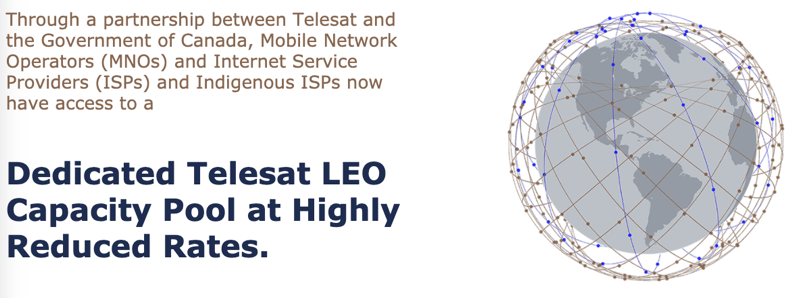
Can Telesat Rival SpaceX Starlink in Canada with New $600 Million Contract?

SpaceX Starlink may have an upcoming rival in Canada, as Telesat recently announced it had signed a $600 million CAD ($456 million USD) contract with the federal government for its low earth orbit satellite internet service.
Earlier this week, the federal government announced the launch of its $1.7 billion Universal Broadband Fund, aimed at connecting 98% of Canadians with high-speed internet by 2026 and all Canadians by 2030. High-speed internet is being defined as up to 50 Mbps download speeds.
According to the Canadian government, it will commit up to $600 million to ” secure capacity on Telesat’s LEO satellite constellation.” This internet capacity will then be made available to internet service providers (ISPs) at subsidized rates to provide high-speed internet to “the most challenging rural and remote communities” in Canada.
“Telesat LEO will transform connectivity in Canada, and this agreement will bring affordable enterprise grade, high-speed connectivity to underserved Canadians no matter where they live and work,” said Dan Goldberg, Telesat’s President and CEO, in a statement.
“We applaud the Government of Canada and Innovation, Science and Economic Development Canada for leveraging revolutionary technologies like Telesat LEO to drive widespread social and economic benefits. We look forward to working with Canadian service providers to provide this capacity to qualified communities across the country to get all Canadians connected as soon as possible,” added Goldberg.
According to Telesat, this capacity pool and reduced purchase price “are based on Service Providers deploying user terminals the are approved by Telesat.”
Ottawa-based Telesat launched its first and only Low Earth Orbit (LEO) satellite back in January 2018. Telesat satellites weigh 800kg (1,763 pounds), far heavier than Starlink satellites at 227kg (500 pounds). SpaceX and Elon Musk did some heavy thinking when it came to satellite design.
Telesat says it plans to have 10% of its 298 satellite constellation in space by January 1, 2023, about 30 satellites, a requirement of being part of the International Telecommunication Union. The company still has not picked a satellite manufacturer to build its LEO constellation.
In January of this year, Telesat inked a deal with Amazon-backed Blue Origin’s New Glenn rocket to send satellites into space. Blue Origin is set to launch its first New Glenn rocket in 2021.
In comparison, Starlink has nearly 900 satellites in space right now and has scheduled launches every month. It’s unclear how Telesat can keep pace with Starlink.
It’s unknown if Elon Musk’s SpaceX and Starlink were ever considered as part of this plan to connect all Canadians to high-speed internet. But one could only imagine the optics if the government picked an American space company instead of something homegrown (it would be Prime Minister Justin Trudeau’s PR nightmare).
It’s worth noting over one-third of Telesat is owned by the Public Sector Pension Investment Board of Canada. Goodness, I sure hope Canadian taxpayers have buckled up and are ready for a $600 million ride.
Last week, Innovation, Science and Economic Development (ISED) Canada, granted regulatory approval for Starlink to service Canadians with high-speed internet.
Recent reports have cited the first Starlink beta invites are set to roll out in Canada this week, so we’ll have to wait and see.

